BODYBUILDING WHILE ON VACATION: YOUR STEP-BY-STEP GUIDE
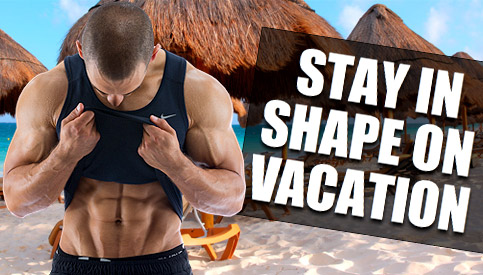
Hard-training lifters often have a love/hate relationship when it comes to vacations.
On the one hand, it’s a great time to kick back, relax and unwind from the regular day to day grind.
Hanging out with friends and family, partying, and sipping drinks on the beach while the sounds of the ocean waves breeze in the background…
On the other hand, working out and eating healthy can often take a back seat (or go completely out the window) once the celebrations start flowing.
Even the most determined athletes can find themselves challenged by the constant stream of temptations at their fingertips.
What’s the best way to approach that upcoming vacation so that you can fully enjoy yourself without falling off track with your fitness plan?
Well, before going any further, let’s not forget that a vacation is exactly that: a vacation.
It’s great that you want to remain dedicated and disciplined towards your muscle building and fat loss goals, but getting overly obsessive about it can easily end up defeating the entire purpose of your vacation in the first place.
Heavily restrict yourself and begin stressing over every single calorie and macro going into your mouth and all you’ll be doing is adding an extra layer of additional worry to your trip that really doesn’t need to be there.
Also keep in mind that just how closely you’ll need to monitor your training and nutrition while you’re away largely depends on how long your vacation is.
For example, if all you’ll be doing is going out of town for a few days or even a week, that’s usually not going to be long enough to be seriously counterproductive to your results as long as you’re not going totally off the charts with your calorie intake.
The body’s levels of muscle mass and fat mass aren’t going to change significantly over night, and “letting loose” a bit over a short term vacation is highly unlikely to have a truly negative impact on your physique.
In addition, any minor “damage” that might occur can be very quickly reversed once you return to the gym after your vacation ends.
On the other hand, if your vacation will be lasting for a longer period of time (say 2-4 weeks or more), then dialing things in a bit more closely becomes increasingly important if you don’t want to fall too far off track.
Let’s go over some useful bodybuilding vacation tips you can employ in terms of training and nutrition in order to find the proper middle ground for yourself…
Working Out While On Vacation
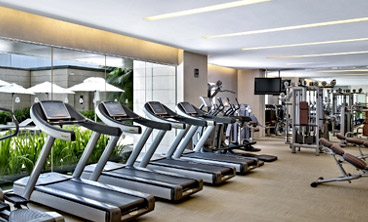
The first question to look at on the training end of things is whether or not you even need to hit the gym while you’re away.
Contrary to the belief of many lifters, your muscles aren’t going to rapidly fall off your frame the minute you decide to take some time away from lifting.
In fact, as long as your diet is reasonably on point (meaning you’re eating at least somewhere around your calorie maintenance level and are consuming adequate protein), muscle loss won’t actually occur until about two weeks of inactivity.
Even then, it will happen at a slow and gradual pace from week to week.
So, if your vacation will only be for a short term period of 1-2 weeks and you’d prefer to just take time off completely, that’s a perfectly viable option.
I actually recommend that people take a rest week from the gym after 6-12 weeks of consistent training anyway (or at least a deload week), so if you can time things out according to that, there’s no need to feel any guilt whatsoever for abstaining from weight training during your trip.
Taking regularly scheduled breaks from training will allow you to fully re-charge both physically and mentally and will actually improve your progress over the long term.
You’ll probably notice a small visual difference after you’ve been out of the gym for a week or two in terms of decreased “fullness” and definition, but this is not the result of actual losses in lean muscle tissue.
It simply happens due to decreased activation of the muscle fibers, lowered levels of inflammation in the tissue, as well as changes in water levels and glycogen status, all of which will very quickly return once you get back into the gym.
If your vacation will be lasting a longer period of time though (or you just really enjoy hitting the gym and want to keep the consistency going), here are some basic guidelines you can follow for both weight training and cardio…
Bodybuilding On Vacation: Weight Training & Cardio Guidelines
1 – Weight Training
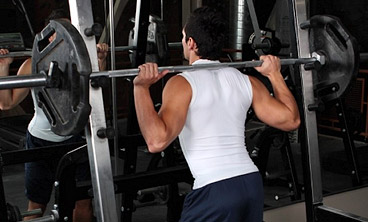
If you do have access to a fully equipped gym and are perfectly happy to stick with your regular workout routine, by all means go ahead.
However, if you want to be as efficient as possible without detracting from your vacation time, you’ll want to condense your workouts down to the essentials.
The simplest way of doing this is to utilize a full body routine or an upper/lower split performed twice per week.
In fact, even a full body routine done once per week will likely be enough to maintain your levels of strength and mass as long as you’re utilizing sufficient volume and intensity.
Center your workouts around big, basic compound exercises that train multiple muscle groups at the same time, such as squats, deadlifts, chest presses, overhead presses, rows and pull ups/pulldowns, and put your focus on quality rather than quantity.
You may not have access to a huge array of gym equipment depending on where you’re staying, but just do the best you can.
It only takes a few basic movement patterns to effectively train all of the different muscle groups on the body anyway, and even a set of dumbbells alone can accomplish that.
Here’s one example of what a simple but effective “bodybuilding vacation workout” might look like…
Day 1
Squat x 3
Romanian Deadlift x 3
Pullup Or Pulldown x 3
Flat Dumbbell Press x 3
Day 2
Deadlift x 3
Dumbbell Lunge x 3
Seated Overhead Dumbbell Press x 3
One-Arm Dumbbell Row x 3
If you have the time, you can optionally add in some isolation work for your smaller muscle groups at the end.
If you only have lighter weights available, simply aim for higher rep ranges to compensate.
Sets as high as 25 reps can still produce positive strength and hypertrophy adaptations, and while I certainly don’t think going that high is ideal in the long term, it’s perfectly fine over the course of a few weeks or less.
2 – Cardio
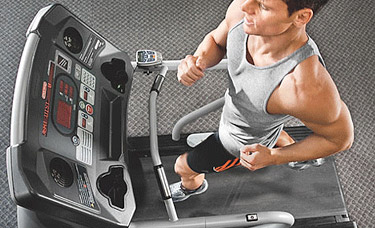
If you want to continue working out while on vacation, resistance training should always be your primary focus.
Strength training is the main driver to both gain and maintain muscle mass, and taking that stimulus away will make you more prone to muscle loss.
However, cardiovascular training does have a place in a well-designed workout routine as well.
It burns calories, improves insulin sensitivity, improves overall health, and even speeds up muscle recovery and growth. And no, cardio does not burn muscle as long as it’s kept within reasonable limits.
When you’re on vacation though, you probably won’t have the time or the desire to spend 45 minutes to an hour running on the treadmill.
If cardio is a regular part of your training plan and you want to remain consistent in that area as well, the solution is to focus on high-intensity interval training sessions (HIIT).
This style of cardio is short, intense and is based on periods of high exertion followed by either complete rest or low-intensity active rest.
An effective HIIT cardio session can last anywhere from literally a few minutes up to around 15 minutes depending on the intensity level, making it the ideal choice for generating maximum results in minimum time.
There are an endless number of different ways that a HIIT workout can be performed, but here are a few examples…
Lowest Intensity: 90-120 seconds ON / 90-120 seconds OFF
Medium Intensity: 30-60 seconds ON / 30-60 seconds OFF
Highest Intensity: 10-25 seconds ON / 20 seconds-60 seconds OFF
Perform 6-10 rounds in total.
For even greater efficiency, simply add your HIIT cardio onto the end of your weight training workouts.
Two basic weight training workouts per week followed by some brief high intensity cardio immediately afterwards should only take up around 2-2.5 hours of your total time, allowing you to get an effective workout in without eating up much of your actual vacation time.
One other important factor to keep in mind as well is that any activity involving at least moderate physical exertion over a sustained period will ultimately burn calories and can count as a form of cardio.
So, if your vacation is going to involve a decent amount of walking/sight-seeing or outdoor activities like biking, surfing or hiking, you can simply count that as your form of cardio and scrap the extra “gym cardio” altogether.
Now that we’ve covered some useful guidelines when it comes to working out on vacation, let’s talk a bit about the nutritional side of things…
Proper Nutrition While On Vacation
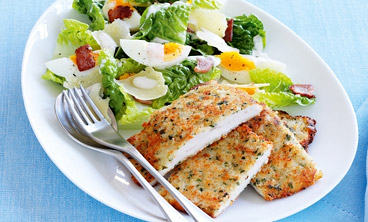
Proper nutrition is usually a bit trickier while on vacation and can be a tougher aspect of your program to control.
However, just keep in mind that if you’re hitting the gym hard and following a sound diet most of the time, you’re not going to undo all of your efforts just by eating a less-than-optimal diet a few weeks each year.
Enjoying good food and drinks is usually a pretty central aspect of a great vacation, so I wouldn’t recommend getting overly wrapped up in hitting precise macros or trying to constantly “eat clean” while you’re away.
My overall recommendation in most cases would be two very basic things:
1) Roughly estimate your total calories.
2) Ensure that you’re consuming adequate protein.
Calorie Intake
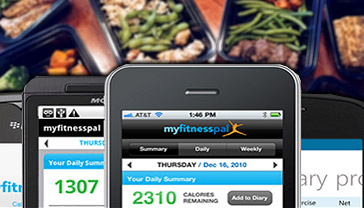
If you’re a more experienced lifter then you can usually just gauge your calories based on hunger and by eyeballing your portions.
If you’re less experienced, then you may want to track things with a bit more detail.
You can do that by using a tracking app such as MyFitnessPal, or by looking up the nutritional information for certain restaurants you’ll be eating at if they have that information available.
If you aren’t able to look the nutritional info up online, just estimate as best you can. The numbers here certainly do not need to be perfect though, especially during a short term vacation.
The specific amount of calories you should aim for depends on whether you’ll be continuing to train or not.
If you’ve decided to take a rest from the gym during your vacation, just try to eat somewhere around your calorie maintenance level.
If you are going to continue hitting the weights and your primary goal is to gain muscle, you can continue eating in your regular calorie surplus.
Most people are probably not going to want to eat in a calorie deficit while on vacation, so if your primary goal is to lose fat, my advice is to just treat your vacation as a “diet break” and eat at maintenance.
One other useful tip you can employ if food is going to be a big part of your vacation is to allot a higher percentage of your calorie intake to the later hours of the day.
By eating a bit lighter at breakfast and during the earlier afternoon hours, you’ll be able to create a “calorie buffer” for later on where you can enjoy those more calorie-dense foods and drinks without going overboard.
You can even take this a bit further if you want by employing a full-on intermittent fasting style approach where you abstain from food completely for the first 6-8 hours of the day.
This may not be the most enjoyable approach for many people while on vacation, but it is an available option if intermittent fasting is something you have prior experience with.
Lastly, since there’s a good chance that your vacation will involve at least some moderate drinking, you can check out my complete Alcohol & Bodybuilding Guide for some tips in that area.
Protein Intake
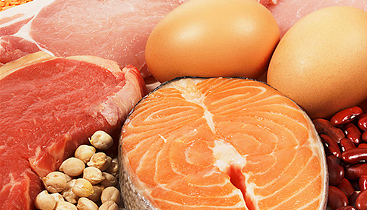
Besides keeping your calorie intake approximately in check (key word being “approximately”), you’ll also want to roughly monitor your protein intake as well in order to further minimize any chances of potential muscle loss.
A protein-rich diet also helps with controlling your calorie intake, which can be useful on vacations when high fat and high sugar foods are usually just an arms reach away.
Consuming enough protein is usually fairly easy, since you really only need around 0.8 grams per pound of body weight daily in order to gain and maintain muscle mass effectively.
If you are keeping your calories around maintenance and are getting in at least 3 standard meals a day based around a main protein source, there’s a good chance that you’ll simply end up eating enough protein by default.
If you do want to be 100% sure that you’re getting enough though, one simple thing you can do is to bring some protein bars and/or protein powder with you, or purchase some once you arrive.
A daily protein bar or a scoop of whey can give you a bit of extra insurance to make sure you’re easily hitting that 0.8g/lb. figure.
While estimating your total calories and protein is usually a good middle ground approach for most people, simply “letting go” and taking a short break from all forms of nutritional tracking is also an available option.
It might sound a bit reckless, but there’s still nothing objectively “wrong” with this as long as you’re aware of what you’re doing, why you’re doing it and what the potential consequences might be.
If you’re still a beginner and an all-out vacation binge ends up erasing a good portion of the progress you’ve made, and that causes you to lose motivation and fall off track in the bigger picture, then yes, that could certainly have some serious negative consequences for you.
Conversely, a more experienced trainee may have no problem at all with intentionally putting on a couple pounds of fat during a vacation and then simply dieting it off for a week or two once they return home.
In any case, the key factor of importance with this particular approach is awareness.
If you’re doing it consciously over a relatively short period of time and understand the upsides/downsides involved, it can still be a viable option as long as you have a proper plan for getting back on track once it’s over.
It just comes down to you, your specific fitness goals, experience level and how you’d like to approach your particular vacation.
Another method you can use is to diet for a couple of weeks leading up to your vacation in order to create a small “body fat buffer”.
For example, if you were to eat in a calorie deficit and drop 3 pounds of fat prior to your trip, you could then comfortably “let loose” and re-gain those 3 pounds of fat while on vacation, ultimately ending up at the same point once you return home.
Bodybuilding On Vacation: The Bottom Line
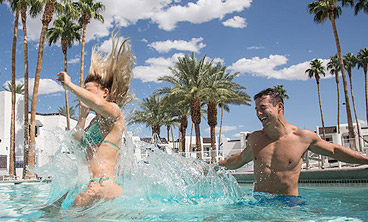
Bodybuilders are a rare breed. We often go to extremes to reach our goals. While this all-in mentality is often helpful, keep in mind that fitness is a way to enhance your life and not to take away from it.
If you worry about every gram of sugar in your exotic beach cocktail, not only will it negatively impact your own traveling experience, but those around you as well.
When you pack your bag and get on the road, realize that you probably won’t be able to maintain your regular workout routine and nutritional program, and that this won’t be a problem if you’re otherwise on point throughout most of the year.
Just like an overweight individual will not lose all of his or her excess fat by working out and eating healthy for a few weeks, you will not lose all your gains by taking a week or two off and following a less than optimal nutrition program either.
That said, there’s also nothing wrong with finding a healthy middle-ground for yourself so that you don’t fall too far off track, and the training and nutrition guidelines given above can help you to accomplish that.
Enjoy your vacation!
If you found this article helpful, make sure to sign up for your FREE custom fitness plan below...




